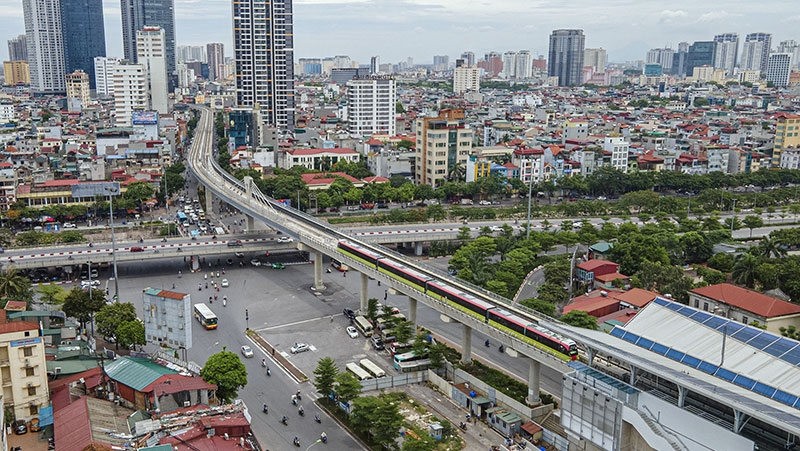The impact from the pandemic
Hanoi has been implementing nine projects using ODA capital with an allocated capital of VND8.65 trillion. By July 22, the city had disbursed VND1.16 trillion, equivalent to 13.42% of the plan.
Meanwhile, Ho Chi Minh City disbursed 10.2%, Hai Phong posted 20.36% and Quang Ninh reported 0.1% of the set plans in the first six months of this year.
The low progress of ODA disbursement is primarily due to the heavy impact of the COVID-19 pandemic, as most of the equipment used by the projects has to be imported are has been delayed in terms of both production and delivery.
In addition, the implementation of ODA projects in many large cities is being halted due to social distancing order.
A representative from the Hanoi Urban Railway Management Board, the investor of the Nhon – Hanoi Station metro line (the metro line No.3), said the state of both construction and epidemic prevention has greatly affected the project’s progress. Only 25.71% of the investment capital of the project has been disbursed so far in 2021. The project to build urban metro line No. 1 in Ho Chi Minh City (Ben Thanh - Suoi Tien section) has also disbursed only 7.25% of the planned amount set out for 2021.
Inadequacies in the implementation process

The rehabilitation of Te canal under the Ho Chi Minh City Water Environment Improvement Project (phase 2). (Photo: HOANG LIEM)
Besides objective reasons, the slow disbursement is mainly due to subjective factors. Most of the projects using ODA capital are construction projects with large technical infrastructure and which require vast land clearance of many households as well as underground works. However, land clearance work is prolonged, causing many problems.
At the Hanoi urban metro line No.3 project, the long-standing problems in land clearance at the construction site of underground stations of S9, S11 and S12 have caused the project to adjust its duration and cost while the contractor had to delay and pause some works.
At the urban metro line No.1 in Ho Chi Minh City, the construction process also encountered difficulties in the relocation of infrastructure works and houses in relation tonine pedestrian bridges, causing additional costs and affecting the progress of the bidding packages.
In addition, many projects could not be implemented because the related procedures had not been completed. For example, the Hanoi urban metro line No.2 has yet to complete procedures to adjust the total investment of the project, the planning of the C9 underground station by Hoan Kiem Lake has not been approved, so the related construction and installation packages cannot be executed.
Moreover, the bidding packages of ODA projects are implemented in the form of EPC (engineering, procurement and construction) while the provision of the necessary relevant parameters of the bidding packages has not been specified from the stage of making the bidding documents, thus affecting the design and progress of the process.
Another important reason is that the overall implementation of ODA projects by ministries and sectors is not proceeding as scheduled, affecting the implementation and disbursement of the projects in localities.
More drastic solutions needed
At a recent online conference on evaluating the disbursement of ODA capital, Permanent Deputy Minister of Finance Tran Xuan Ha emphasised that from now until the end of the year, one important solution to speed up ODA disbursement is to improve the role of investors and project management boards.
Deputy Director of the Hanoi Department of Planning and Investment Nguyen Ngoc Tu said that the Hanoi People's Committee has established working groups to direct investors on how to accelerate the progress of investment projects, including ODA projects, and promptly report difficulties to the city to promote the disbursement rate.
Regarding the Nhon-Hanoi Station metro project (an important national project), the city People's Committee established a separate working group to help the investor solve the problems needed to put the elevated section into operation in 2022, Tu noted.
Disbursement of public investment capital, including capital from foreign sources, plays a crucial role in promoting socio-economic development, especially in the context that our country is trying to realise the dual goals of both fighting the pandemic and maintaining economic growth.
Therefore, in addition to overcoming the difficulties caused by the objective impacts of the pandemic, ministries and sectors also need to pay attention to and coordinate with localities to remove bottlenecks related to land clearance, the approval of investment projects, and the handling of differences between Vietnam's current regulations and international practices, and others so that disbursement is smooth and project progress is accelerated, contributing to boosting the national economy as set out by the National Assembly.
















